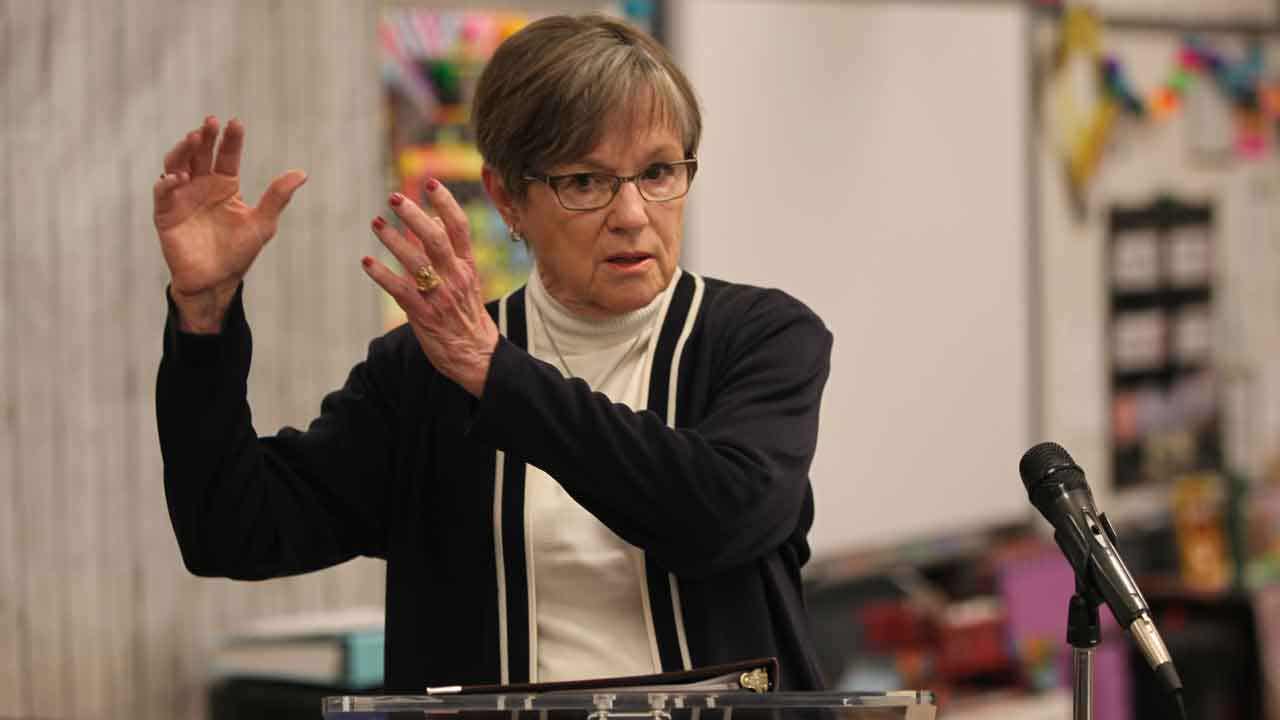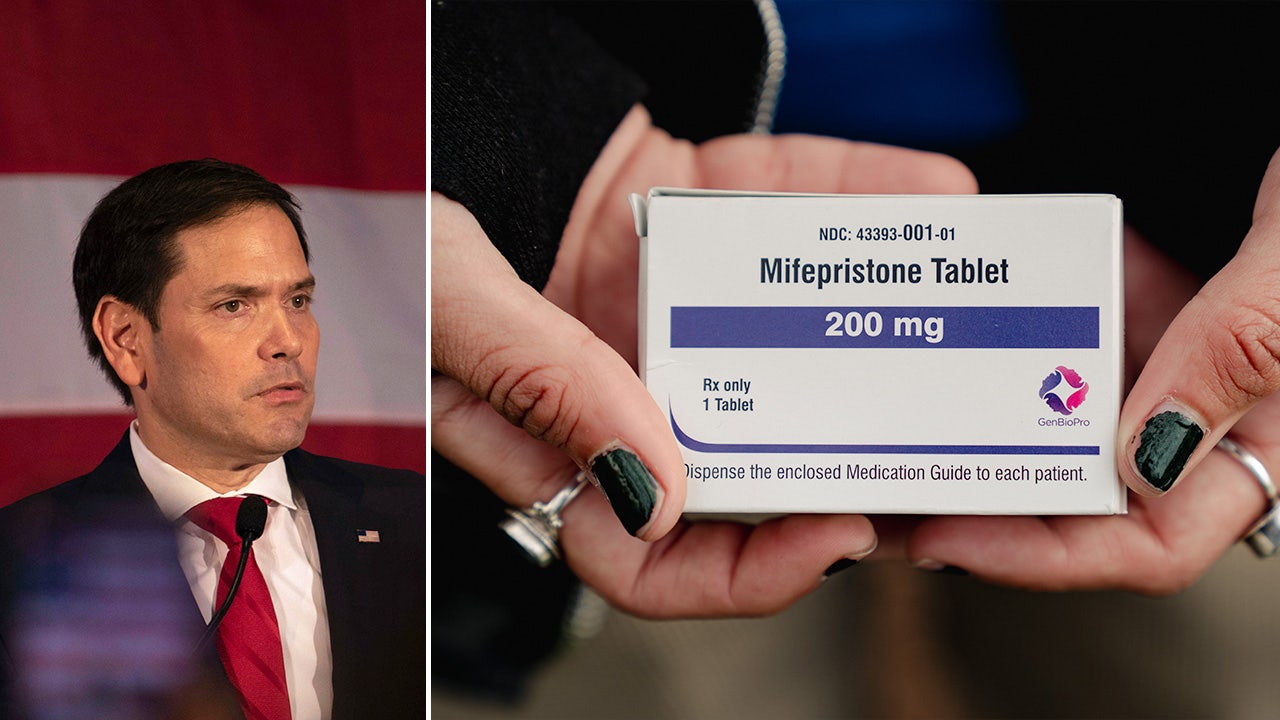Northeast
Suspect in NYPD Officer Jonathan Diller slaying pleads not guilty to murder, other charges

The career criminal accused of fatally shooting a New York Police Department officer in the stomach during a routine traffic stop pleaded not guilty at his arraignment Tuesday morning, more than a month after the incident.
Guy Rivera, 34, was hospitalized after he allegedly inflicted a mortal wound on Officer Jonathan Diller, 31, and fellow officers returned fire. He was still wearing a brace on his wrist when he arrived handcuffed in court and had visible scars on his face. He had a buzzed head and goatee and was wearing a white dress shirt and pink tie.
Prosecutors told Judge Michael Aloise that Rivera admitted to police at the hospital that he had a shank hidden within his body. They also asked the judge to remove legal aid counsel from the defense, alleging a conflict of interest involving potential witnesses in the case who had also been represented by legal aid in matters that were sealed by the court.
Prosecutors also notified Judge Aloise that they would seek a sentence for Rivera under the state’s “persistent felony offender” rules due to his extensive criminal history if convicted.
NYPD JONATHAN DILLER SHOOTING: SUSPECT GUY RIVERA CHARGED WITH MURDER, ATTEMPTED MURDER IN ATTACK ON OFFICERS
Murder suspect and ex-con Guy Rivera appears for his arraignment in a Queens, New York, courtroom on Tuesday, May 7. Rivera is charged with the murder of NYPD Officer Jonathan Diller and attempted murder of his partner, Sgt. Sasha Rosen. (Fox News)
On March 25, a group of NYPD officers including Diller approached Rivera and his friend Lindy Jones, another ex-con, in an illegally parked car in Far Rockaway, New York.
The officers suspected he might have been carrying an illegal handgun after witnessing him walk out of a store with a gun-shaped object in his front pocket, prosecutors revealed Tuesday.
Rivera allegedly refused the officers’ request to open the car window and instead pulled the gun, shot Diller beneath his vest and took aim at NYPD Sgt. Sasha Rosen.
The two wrestled for control of the gun, and it jammed when Rivera allegedly squeezed the trigger again.
JONATHAN DILLER SHOOTING: NYPD SERGEANTS’ UNION TELLS ANTI-POLICE DEMOCRATS TO STAY AWAY FROM FUNERAL
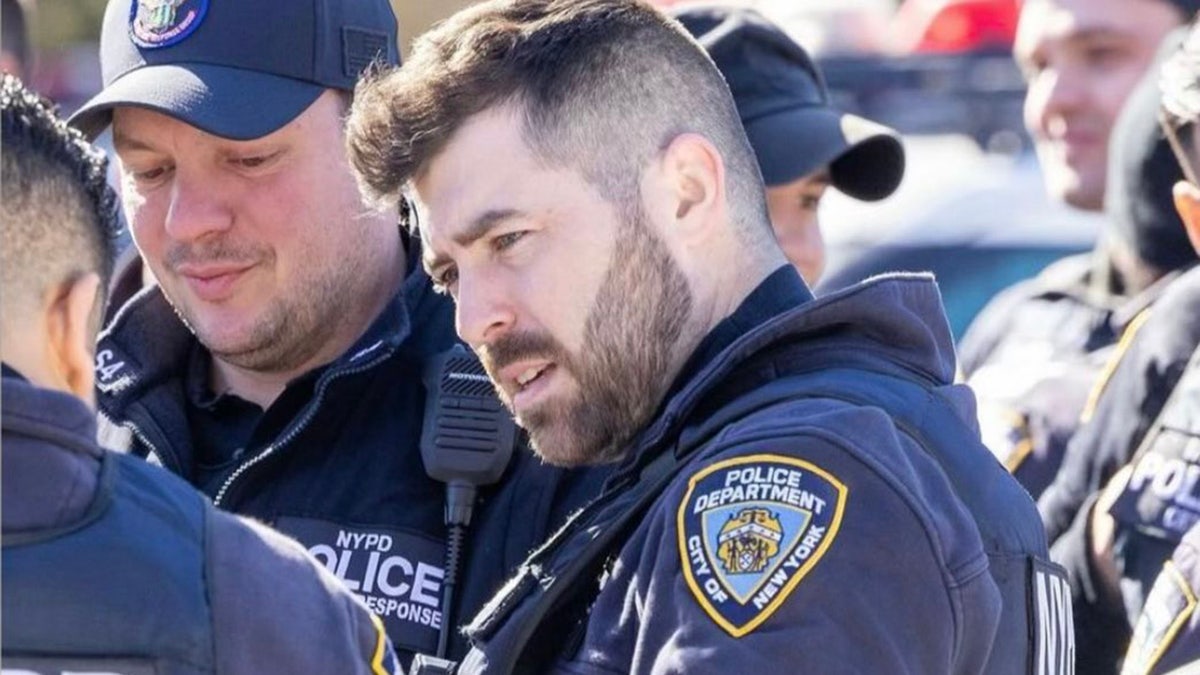
NYPD Officer Jonathan Diller is survived by his wife and their nearly 1-year-old son. (NYPD)
Rivera suffered a gunshot wound of his own during the struggle and was taken to the hospital.
Police recovered another gun from Jones’ glove box, with the serial number scratched off, prosecutors said. He faces felony firearms charges.
Both men have lengthy rap sheets and prior felony convictions. One has pending felony charges, and both obtained firearms they could not legally own.
NYPD OFFICER SHOT, KILLED DURING CAR STOP IN QUEENS BY SUSPECT WITH MULTIPLE PRIOR ARRESTS: POLICE
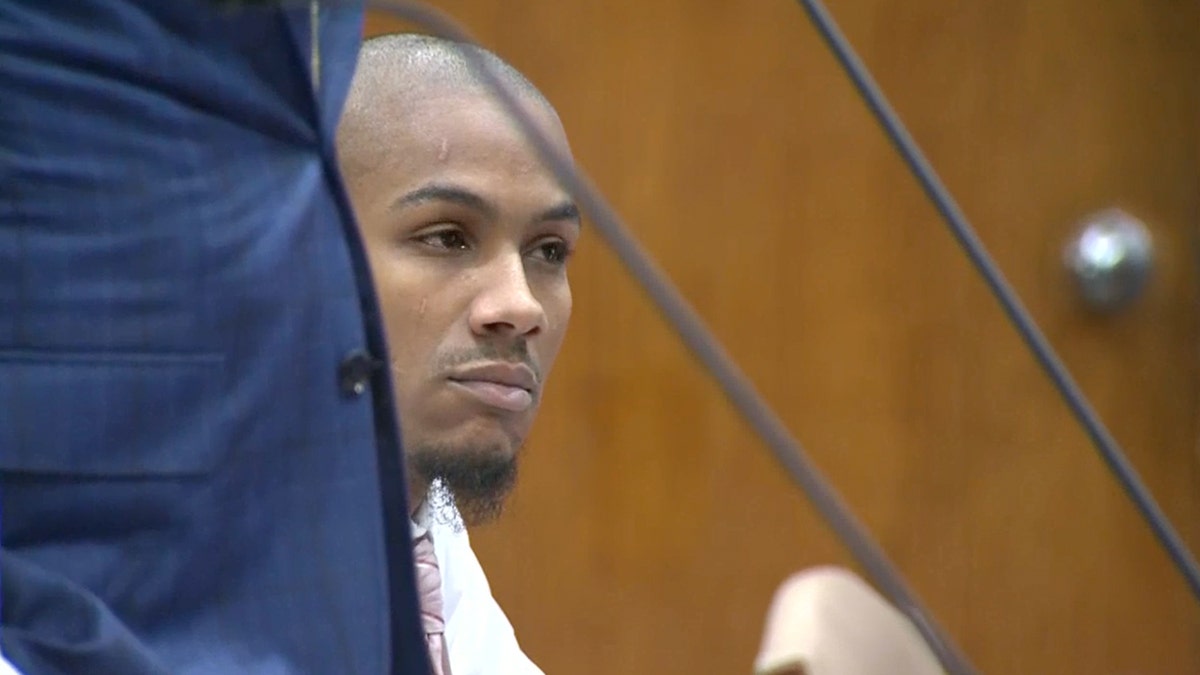
Murder suspect and ex-con Guy Rivera appears for his arraignment in a Queens, New York, courtroom on Tuesday, May 7. Rivera is charged with the murder of NYPD Officer Jonathan Diller and attempted murder of his partner, Sgt. Sasha Rosen. (Fox News)
Rivera has had 21 prior arrests, nine of them for felonies, and he recently got off parole.
Queens District Attorney Melinda Katz previously said Rivera’s arraignment would happen as soon as he was medically cleared.
“We are grateful that the grand jury returned serious charges against the defendant,” she said Tuesday. “Our thoughts are with Detective Diller’s family, friends and colleagues as they continue to grieve. We will seek justice for him.”
Jones, 41, was convicted of attempted murder in 2002, served time in prison and was somehow out on the streets despite a pending felony firearms case from last year, according to the Queens District Attorney’s Office.
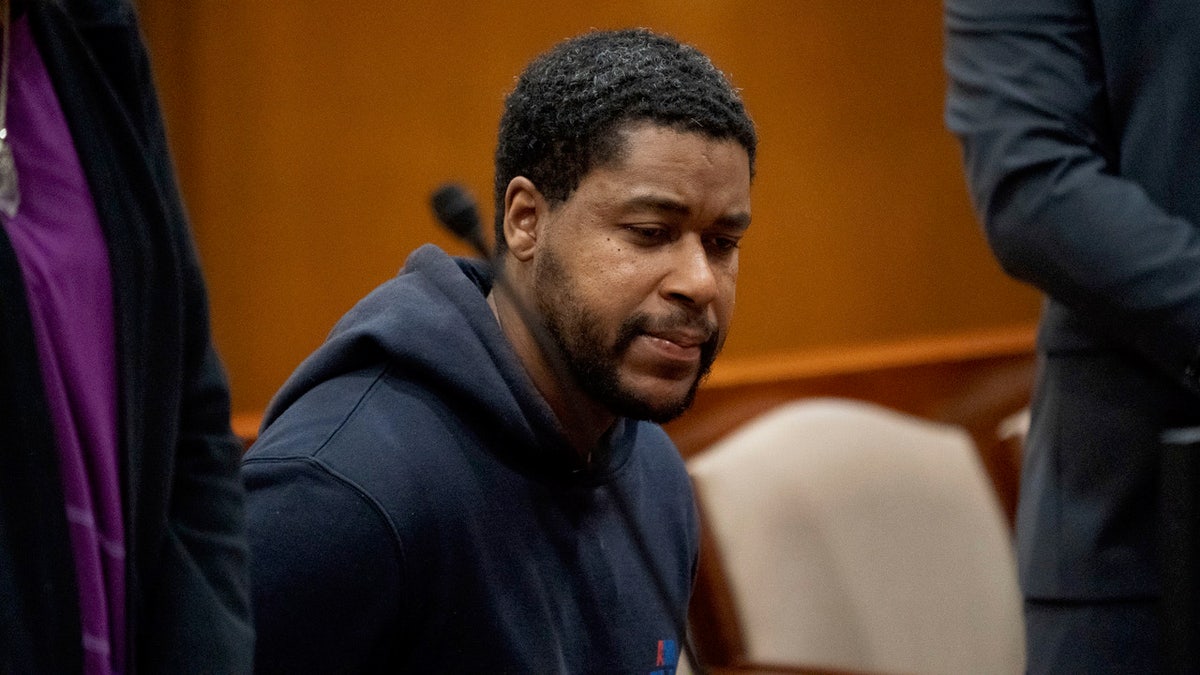
Ex-con Lindy Jones appears in a Queens, New York, courtroom following the shooting death of NYPD Officer Jonathan Diller. A passenger in Jones’ car, Guy Rivera, is accused of opening fire on the officer during a traffic stop. (Pool via Richard Harbus for Daily Mail)
Diller died at Jamaica Hospital in Queens.
He had a wife and a 1-year-old son.
News of his death prompted a national outcry that grew larger after details about the suspects’ criminal backgrounds emerged.
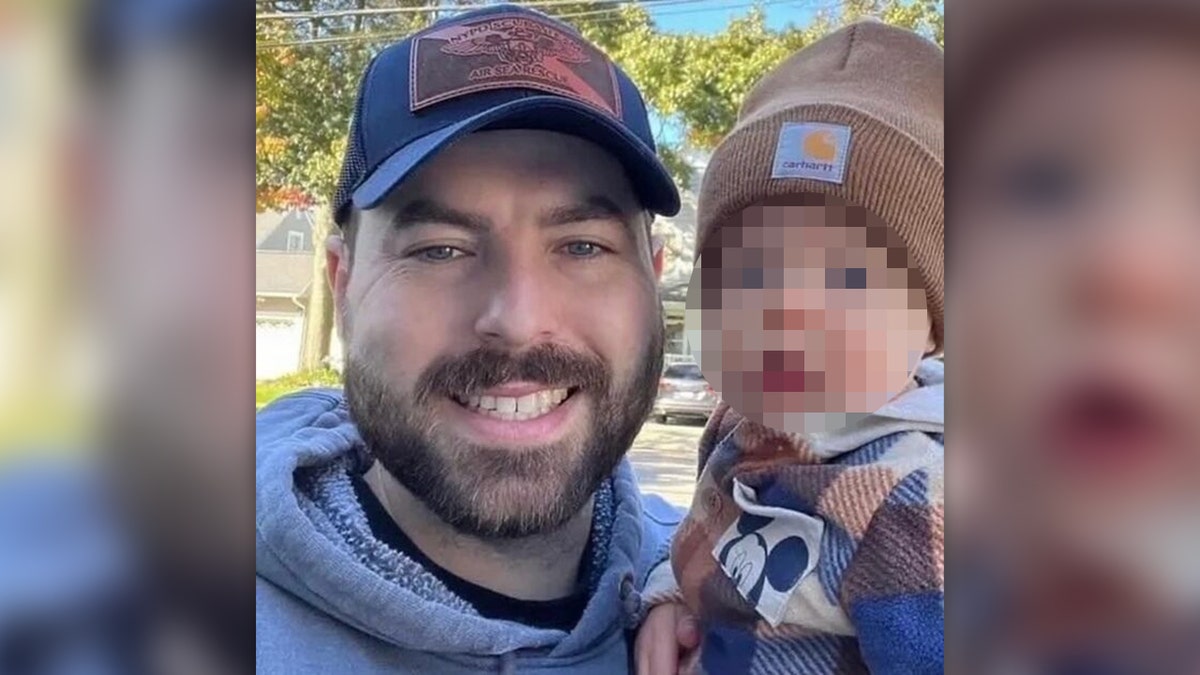
NYPD Officer Jonathan Diller, 31, was the father of a 1-year-old boy. A violent ex-con has been accused of fatally shooting him during a stop. (Tunnel to Towers Foundation)
“Detective Diller was shot and killed while trying to rid our streets of illegal weapons, a lawless act that was an affront to a civilized society,” Katz said in a statement Tuesday.
Former President Trump attended his wake on Long Island as President Biden hosted wealthy donors for a fundraising gala in nearby Manhattan.
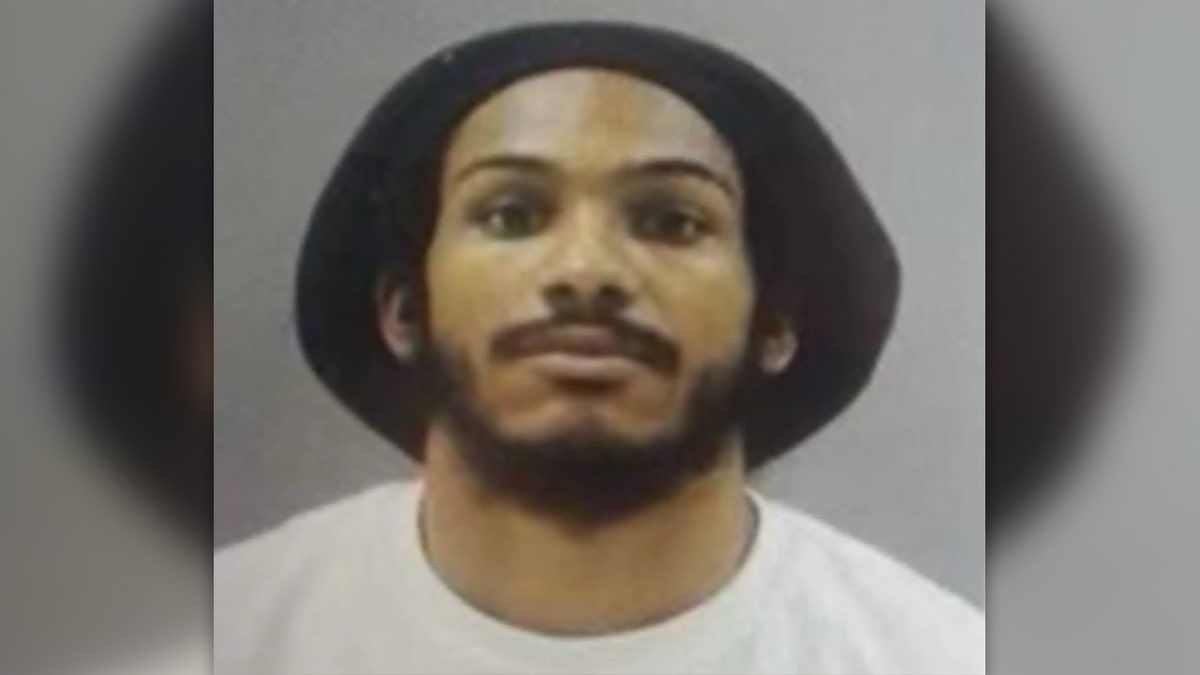
Guy Rivera, an ex-con suspected of fatally shooting NYPD Officer Jonathan Diller, appears in a mugshot. (NYPD)
Rivera is being held without bail. He could face up to life in prison without the possibility of parole if convicted. The judge set his next hearing for July 22.
Jones faces up to 30 years in prison on the gun charge. He returns to court on June 12.
Fox News’ Julia Bonavita contributed to this report.
Read the full article from Here

Pennsylvania
Pa. attorney general candidates rebuild campaign coffers after pricey primaries
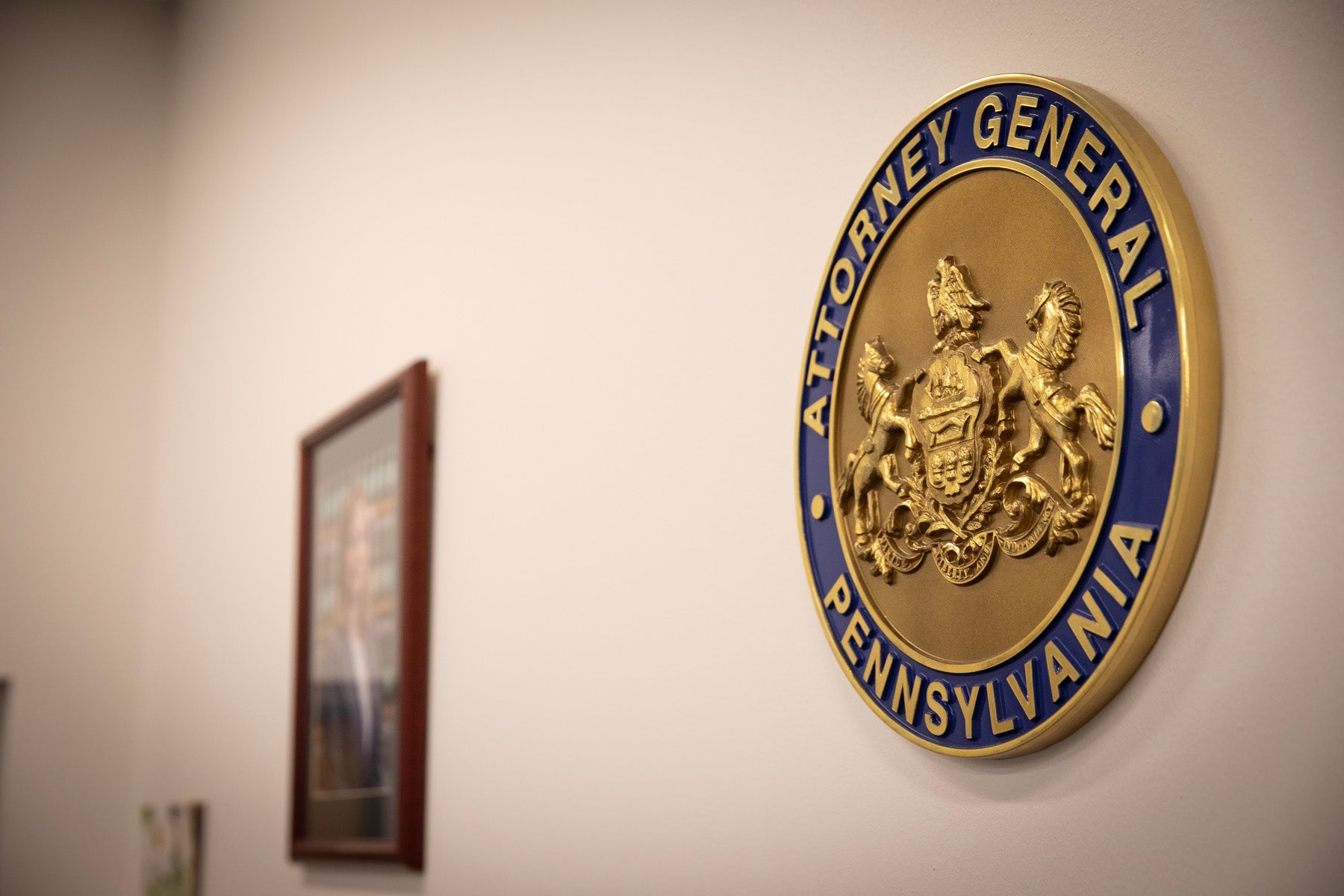
This story originally appeared on Spotlight PA.
The Democratic and Republican candidates competing to be Pennsylvania’s next attorney general first had to survive contested primaries that drained their campaign coffers.
With more than five months until the November election, they’re rebuilding those cash reserves, thanks to very different backers.
The campaigns of Democrat Eugene DePasquale and Republican Dave Sunday have each spent more than $300,000 since the beginning of 2024, new campaign finance filings show. That left both with roughly $30,000 to spend as of May 13.
DePasquale, the state’s former auditor general, leveraged his statewide name recognition and cruised to victory in a crowded Democratic field that saw no party endorsement. Sunday, the district attorney in York County, handily beat state Rep. Craig Williams (R., Delaware) with the help of an endorsement from the state Republican Party.
Sunday raised nearly $20,000 between April 9 to May 13. His biggest donors included a candidate committee associated with Heather Heidelbaugh ($2,000), who unsuccessfully challenged former Attorney General Josh Shapiro in 2020, and a PAC associated with central Pennsylvania-based Shipley Energy ($2,500).
His latest campaign finance filing also shows significant support from the Commonwealth Leaders Fund, a PAC that supports alternatives to public education and is overwhelmingly funded by billionaire Jeff Yass. That group spent $108,000 ahead of the primary on mailers.
“We are excited for any help from individuals who want to bring accountability and redemption to the criminal justice system,” Sunday campaign spokesperson Ben Wren said of the in-kind contribution.
Sunday also received considerable outside support. Keystone Prosperity PAC, which is associated with the Republican Attorneys General Association, spent more than $100,000 on text messages to back Sunday through the independent expenditure process — meaning it was not allowed to coordinate with the campaign.
The attorney general serves as Pennsylvania’s legal representative and defends the commonwealth’s laws in court. In recent years, this position has attracted national attention, particularly as the office defended the results of the 2020 presidential election.
The role has been a launching pad for politicians aspiring to higher office. Two of the state’s last three governors previously held the position of attorney general.
DePasquale raised just over $58,000 between April 9 to May 13. That includes a $10,000 post-primary donation from International Brotherhood of Electrical Workers Local Union No. 5.
“We spent all of our resources on the primary leaving nothing to chance, but we’ve already seen that turn around pretty quickly,” Carver Murphy, campaign manager for DePasqaule, told Spotlight PA. “We don’t have Jeff Yass writing us an endless check, but we’re seeing good support from institutional partners, labor, grassroots donors.”
He added that since May 13, the DePasquale campaign has raised over six figures, with major donations from a carpenter’s union and a firefighter’s union in Pittsburgh.
Rhode Island
21 states join Biden administration in bid to modernize nation’s aging grid • Rhode Island Current

Twenty-one states are joining a push by the Biden administration to modernize America’s aging electric grid, which is under pressure from growing demand, a changing power generation mix that includes lots of wind and solar and severe weather.
The administration, which has set a goal of a carbon-free power sector by 2035, announced Tuesday that the states had joined what it called the “Federal-State Modern Grid Deployment Initiative,” which is intended to “help drive grid adaptation quickly and cost-effectively to meet the challenges and opportunities that the power sector faces.”
In exchange for federal technical and financial assistance opportunities, participating states will “prioritize efforts that support the adoption of modern grid solutions to expand grid capacity and build modern grid capabilities on both new and existing transmission and distribution lines.”
That means in part focusing on ways to get more out of existing transmission lines, since building new ones can take a decade or more in some cases.
“There are technologies we can use to optimize the current infrastructure we have,” said Verna Mandez, director of transmission at Advanced Energy United, a clean energy trade group.
Those include re-conductoring existing lines to handle more juice as well as so-called grid-enhancing technologies, a suite of tools that include sensors, power-flow controls, software and hardware that can better deliver real-time weather data, among other technologies.
In many cases, those technologies have been adopted in other countries but uptake has lagged here, in part because utilities aren’t incentivized to adopt them and generally don’t face consequences as a result of grid congestion, which costs electric customers billions of dollars each year.
“Most transmission providers get more money when they build transmission projects,” Mandez said.
The White House said in a news release that adopting newer technologies “means that renewables and other clean sources of power can be integrated sooner and more cost-effectively than waiting for new transmission construction, which will address load growth challenges more rapidly, create good-paying jobs and lower Americans’ utility bills.”
The Federal Energy Regulatory Commission has also in several orders prodded utilities and grid operators to consider more use of grid-enhancing technologies.
And some states are taking action on their own. Virginia, which did not join the initiative announced Tuesday, passed legislation signed by GOP Gov. Glenn Youngkin that requires utilities to consider grid-enhancing technologies in their planning. Last year, Montana passed legislation aimed at increasing use of advanced reconductoring. Minnesota’s legislature also voted this month to add grid-enhancing technologies to the state’s transmission planning process and require some utilities to evaluate the tools for highly congested lines.
‘More tools than ever’
To get a more reliable and cleaner electric grid, as well as accommodate electric demand that’s growing for the first time in more than a decade, the U.S. needs lots of new transmission capacity, experts agree.
Last year, the U.S. Department of Energy found that almost all regions of the country would benefit from more transmission lines and a National Renewable Energy Laboratory study estimated that getting to 100% carbon-free electricity by 2035 could require anywhere from 1,400 to 10,100 miles of new high capacity transmission lines per year starting in 2026.
That’s why the Biden administration has been pushing hard to remove roadblocks to new transmission lines, which can take a decade or more to develop in some cases, and the Federal Energy Regulatory Commission published a landmark new rule on regional transmission planning and cost allocation. Last month the administration also announced a public-private partnership to upgrade 100,000 miles of transmission lines over the next five years and the Department of Energy has identified 10 potential “national interest” electric transmission corridors, a designation that would help expedite the projects and give developers access to federal financing.
“The power sector, which is responsible for a quarter of annual U.S. greenhouse gas emissions, now has more tools than ever – including unprecedented financial support, efficient permitting, and long-term regulatory certainty – to reduce pollution and upgrade the grid to support more factories, electric vehicles and other growing sources of electricity demand,” the White House said.
The states joining the effort are Arizona, California, Colorado, Connecticut, Delaware, Hawai‘i, Illinois, Kentucky, Maine, Maryland, Massachusetts, Michigan, New Jersey, New Mexico, New York, North Carolina, Oregon, Pennsylvania, Rhode Island, Washington, and Wisconsin.
GET THE MORNING HEADLINES DELIVERED TO YOUR INBOX
Vermont
Vermont Bishop Has Faced Dissension and Racial Conflict – The Living Church

The Bishop of Vermont — a Black woman in one of the whitest states in the country — has experienced hostility and conflict in her role, to the extent that she is always accompanied when visiting churches in the diocese, and her visitation schedule is not publicized.
The Rt. Rev. Shannon MacVean-Brown also faced demands for her resignation from members of the Standing Committee. In 2023, the now-former president of the committee lodged complaints about “leadership and accountability” with the presiding bishop’s office — without first attempting to address the concerns with the bishop herself.
The tensions are remarkable in light of the fact that MacVean-Brown was handily elected on the first ballot at a diocesan convention in 2019, outpolling two white candidates.
“Nobody was thinking, oh, this is going to be great to elect this black woman. I mean, there were just so many other things about who I am as a leader, my experiences, that meshed with who the Diocese of Vermont is. and so it made sense for us to be Bishop and people together,” MacVean-Brown told TLC in an hour-long interview. “And I think we all sort of took for granted that there is an opportunity for us … we could have been more proactive, and foreseen that there could be differences.”
The situation is described in a 22-page Mission Leadership Review written by the Rev. Gay Jennings, the former president of the House of Deputies who now serves as a consultant to dioceses. She based her conclusions on interviews with 48 people in leadership roles or otherwise associated with the Diocese of Vermont.
“The bishop has experienced people speaking to her and about her in ways that are inappropriate – she is the bishop, but more importantly, she is a beloved child of God,” the report says. “It has to be safer for her as a Black woman. Experiencing a home intrusion; installing security cameras for physical safety; needing two restraining orders; needing to be accompanied on visitations; being verbally assaulted by a few people in the diocese – all this consultant can say is, Lord, have mercy—and, I am pretty sure this would not be happening if she were white.”
The home intrusion was a frightening episode, but did not appear to be related to MacVean-Brown’s diocesan role. Diocesan offices and the bishop’s residence are located in Rock Point Commons, a 130-acre forested enclave owned by the diocese on the edge of Burlington. MacVean-Brown and her husband Phil were at home one night in November 2021 when they heard glass break. They called police, who responded and arrested a man with a long criminal record.
There’s a separate restraining order against a woman who repeatedly confronted the bishop at her home and office. “She was upset with someone at one of the parishes, but was coming to me to try to make me do something about it. And it became invasive in the ways she was trying to do that,” MacVean-Brown said.
Vermont has a reputation as a very progressive state, but it is also nearly 94 percent white, making it the second-whitest state (Maine is a roundoff error whiter). According to a local television report in 2021: “Since 2018, at least three Black female leaders in Vermont, including a state lawmaker, a town board member and the former head of the Rutland area NAACP branch, have left their roles in response to persistent harassment and sometimes violent threats.”
“Vermont is so beautiful,” the bishop said, and when she visits one of the 42 Episcopal churches in the state, “the drive never gets old, doesn’t matter what season it is.”
But “as you drive around in different places, pockets of the state, you’ll see things that let you know that I might not be safe by myself,” she said, citing militia activity as an example. “And so for peace of mind, my husband goes with me when we make visitations.”
Tension escalated in early 2023 when the president of the Standing Committee contacted the presiding bishop’s office. According to the Mission Leadership Review, “There had been no previous meaningful discussion of the Standing Committee’s concerns with the bishop, and this intervention happened without her knowledge and before she was fully aware of the issues at hand.”
The then-president and another member of the Standing Committee reportedly refused to take part in a reconciliation process, insisting instead that the bishop should resign.
The report is vague about the specific nature of the conflict, and the principals don’t want to discuss it. The Rev. Lisa Ransom, the former president of the Standing Committee, said by email: “Out of respect for my bishop, I will not be speaking to the press.” MacVean-Brown said: “I’ll leave that for others to talk about, you know, the details of that.”
Four of the eight members of the Standing Committee have been replaced since the conflict erupted. The four continuing members wrote in a May 23 letter to the diocese: “It has been brought to our attention that many, if not all, of the individuals named by the former president of the Standing Committee as having formal complaints about Bishop Shannon were not corroborated by those individuals in follow-up conversations.”
Deacon Stannard Baker, one of the continuing members of the Standing Committee, said the conflict stemmed from a confluence of small problems, rather than a single major cause. For example, he noted that the pandemic began about seven months after the bishop’s consecration, complicating relationship-building efforts.
“She had to hold the line quite, quite strongly on not having in-person services, not having communion, that sort of thing. And before it was safe to leave that, there were small congregations, particularly saying, Oh, we want to go back, we want to go back. And the bishop had to say ‘no, you may not,’” Baker remembered.
The leadership review provides hints of a conflict over governance. “Congregationalism is the dominant polity throughout much of New England’s religious life,” the document states. “The town hall culture of Vermont means people expect to have a say on anything and expect to be involved in all decision-making.”
Congregationalism is a system in which individual churches are largely self-governing, and as the report dryly states: “some aspects of congregationalism are in tension with some aspects of the polity of the Episcopal Church.”
MacVean-Brown is from Detroit, which she identified as “the Blackest city in the nation.” She said, “I’m used to a really diverse form of leadership, with a lot of Black people in leadership. … So it takes practice doing this, what we’ve done.”
The bishop started a new congregation online during the pandemic, the Green Mountain Online Abbey, which continues to worship as a community today, led by a vicar. When online worship started, “it was funny because we didn’t have enough room in the ‘church,’ because our Zoom account wasn’t big enough to accommodate everyone. So we had a new church ‘building’ by the next day.”
Financial concerns have added to the tension. In 2021, an assessment by an accountant “revealed that a financial cliff is on the horizon,” necessitating austerity measures. She reached an agreement with Bishop of New Hampshire Robert Hirschfeld and Bishop of Maine Thomas Brown to share resources for ministry and administration, and each of the bishops now serves as an assisting bishop in the other two dioceses.
“We’ve been chipping away at it for the last few years,” working to get clear accounting practices and efficiencies in place, and hiring a new interim chief financial officer. “We’re going to be OK,” she said.
Under her leadership the diocese also has created “constellations” of affiliated congregations, creating more full-time opportunities for clergy. Five of the 42 parishes currently have full-time priests, and three additional full-time priests serve constellations. In December, the diocese (along with the Diocese of Massachusetts) received a Lilly grant of $1.168 million for “an initiative that will provide lay leaders in lay-led congregations with opportunities for spiritual growth.”
The diocese recently invited Kaleidoscope Institute to facilitate a day of conversation and reconciliation. “Executive Council and the Standing Committee have a mixed assessment of the March 16 Truth and Reconciliation Day,” the two groups said in a May 23 letter. Some attendees had not been aware of the conflict, and “the day was not managed in a way that enabled attendees to hear or discuss details of the 2023 conflict, still less to begin a process of reconciliation. As a result, the work of the day was far from complete, and many attendees left wondering, ‘What’s the next step?’”
Still, “The lay and clergy members of both groups agree unanimously that we support Bishop Shannon MacVean-Brown and look forward to her having a long tenure as our bishop.” She is 57, and thus has 15 years until mandatory retirement.
“We’ve really gathered around her and and begun this process of really understanding some of those currents of racism and misogyny, and how we move forward in a stronger, more thoughtful way,” Baker said.
-

 Culture1 week ago
Culture1 week agoFrom Dairy Daddies to Trash Pandas: How branding creates fans for lower-league baseball teams
-

 News1 week ago
News1 week agoRed Lobster files for bankruptcy after missteps including all-you-can-eat shrimp
-

 World1 week ago
World1 week agoPanic in Bishkek: Why were Pakistani students attacked in Kyrgyzstan?
-

 News1 week ago
News1 week agoThe states where abortion is on the ballot in November : Consider This from NPR
-

 Politics1 week ago
Politics1 week agoMichael Cohen swore he had nothing derogatory on Trump, his ex-lawyer says – another lie – as testimony ends
-

 News1 week ago
News1 week agoCity of Kyle falls short of ‘Kyle’ world record
-

 Politics1 week ago
Politics1 week agoAnti-Israel agitators interrupt Blinken Senate testimony, hauled out by Capitol police
-

 Movie Reviews1 week ago
Movie Reviews1 week agoMai Movie Review: Emotionally powerful lead performances in this sensitive and heart-breaking romantic film











